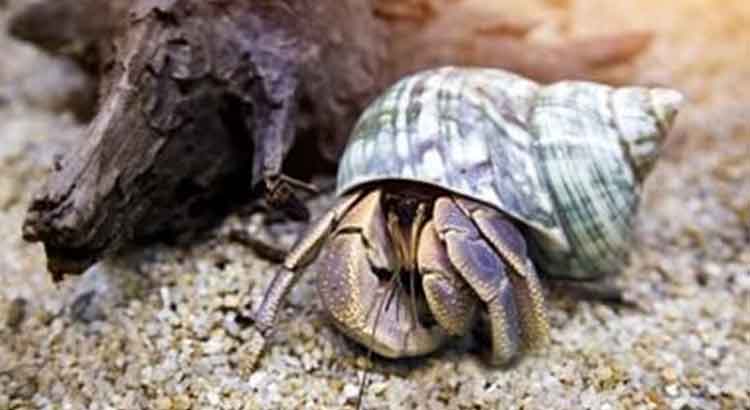Ever wondered if hermit crabs’ eyes grow back? Dive into the fascinating world of these crustaceans to uncover the truth about their remarkable ability to regenerate, shedding light on a lesser-known aspect of their intriguing biology.
Yes, hermit crabs’ eyes do indeed grow back, but only during molting. When a hermit crab molts, it sheds its exoskeleton, including any damaged or lost body parts like eyes. During the molting process, a new exoskeleton forms, allowing the crab to regenerate its eyes, ensuring its survival in the wild.
Discover the incredible journey of hermit crabs as they undergo molting and regeneration, shedding light on the wonders of nature’s resilience and adaptation. Join us as we delve deeper into the world of these fascinating creatures and uncover the secrets behind their remarkable ability to thrive in their ever-changing environment.
Molting Process
During molting, hermit crabs shed their old exoskeleton to make way for a new one. This process is crucial for their growth and survival, allowing them to replace damaged or lost body parts, including their eyes. As the crab grows, its exoskeleton becomes too small, triggering the molting process.
Molting begins with the crab secreting enzymes to soften its exoskeleton, making it easier to shed. Once softened, the crab wriggles out of its old exoskeleton, leaving behind a vulnerable soft body. It then hides away in a safe spot until its new exoskeleton hardens, providing protection and support for the crab’s body.
Regenerative Abilities
Hermit crabs possess remarkable regenerative abilities, especially during molting. As they shed their exoskeleton, they can regenerate lost or damaged body parts, including their eyes. This process ensures their continued survival in their dynamic coastal habitats, where encounters with predators and environmental challenges are common.
Through their regenerative abilities, hermit crabs exemplify nature’s resilience and adaptability. Despite facing various threats in their environment, they have evolved mechanisms to overcome adversity and thrive. Understanding these abilities sheds light on the intricate balance of life in coastal ecosystems and the remarkable adaptations of its inhabitants.
Eye Regrowth During Molting
During molting, hermit crabs have the opportunity to regenerate lost or damaged eyes. This process occurs when the crab sheds its exoskeleton, allowing for the growth of new eyes. Regenerating eyes during molting ensures that hermit crabs can maintain their vision and navigate their surroundings effectively in their habitat.
Hermit crabs rely on their eyesight for various activities, such as foraging for food, avoiding predators, and finding suitable shells. Regrowing eyes during molting is crucial for their survival, enabling them to continue these essential behaviors without impairment. Through this natural process, hermit crabs demonstrate their remarkable ability to adapt to changing conditions in their environment.
Providing Optimal Conditions
Creating optimal conditions during molting is essential for hermit crabs to successfully regenerate their eyes and exoskeleton. Maintaining proper humidity levels in their habitat helps soften the old exoskeleton, facilitating the molting process. Additionally, offering a variety of shell options ensures that hermit crabs can find suitable replacements after molting, reducing stress and providing essential protection for their vulnerable bodies.
FAQ
Do hermit crabs feel pain when they lose their eyes during molting?
Hermit crabs do not have a centralized nervous system like mammals, so they likely do not experience pain in the same way. However, losing their eyes can still be a stressful experience for them, as it affects their ability to navigate their environment and detect potential threats.
How long does it take for hermit crabs’ eyes to regrow during molting?
The regrowth of hermit crabs’ eyes during molting can vary depending on factors such as the crab’s size, health, and environmental conditions. On average, it may take several molting cycles for the eyes to fully regenerate, with each molting cycle lasting anywhere from a few weeks to several months.
Can hermit crabs survive without eyes?
While hermit crabs rely on their eyesight for various activities, they can still survive without eyes. They possess other sensory organs, such as antennae and sensitive hairs, which help them navigate their surroundings and detect changes in their environment. However, having functional eyes provides hermit crabs with a distinct advantage in their coastal habitats.
How can I tell if my hermit crab is about to molt?
There are several signs that indicate a hermit crab is preparing to molt. These include decreased activity, loss of appetite, and changes in behavior, such as hiding more often. Additionally, you may notice the crab’s exoskeleton appearing dull or cloudy as it prepares to shed its old shell.
What should I do if my hermit crab is molting?
If you notice that your hermit crab is molting, it’s essential to provide a quiet and stress-free environment. Avoid handling the crab or disturbing it during this vulnerable time. Ensure that the habitat maintains proper humidity levels to support the molting process, and offer plenty of hiding places and substrate for the crab to burrow into.
Final Thoughts
Understanding the molting process and regenerative abilities of hermit crabs offers valuable insights into the resilience and adaptability of these fascinating creatures. Witnessing firsthand how they navigate the challenges of shedding their exoskeletons and regrowing essential body parts highlights the intricate balance of nature’s mechanisms.
As caretakers of hermit crabs, providing optimal conditions during molting becomes paramount to their well-being and survival. Ensuring a stress-free environment with proper humidity levels and offering a variety of shell options can greatly support the molting process and facilitate the regeneration of eyes and other body parts.
In conclusion, delving into the world of hermit crabs reveals the marvels of nature’s design and the resilience of life in coastal ecosystems. By fostering an understanding of their unique biology and needs, we can enhance our appreciation for these remarkable creatures and contribute to their conservation in the wild.

